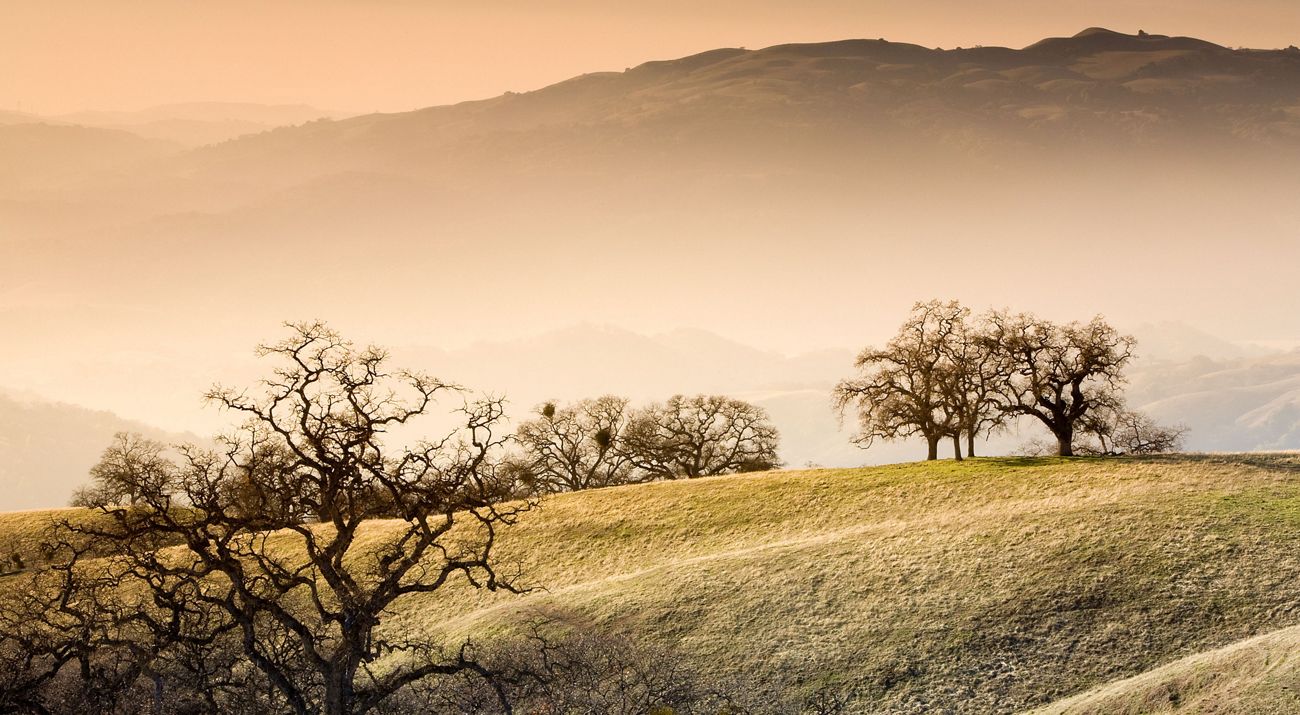Mount Hamilton
California

The last significant expanse of open space between San Francisco and the Great Central Valley
The Nature Conservancy’s Mount Hamilton project is not just another pretty space. The 1.5-million-acre conservation project safeguards threatened wildlife habitats while helping to assure the flow of clean water to the San Francisco Bay Area. In addition, protecting these lands from unchecked development preserves the historic way of life of California ranchers.
Irreplaceable, invaluable, beautiful, Mount Hamilton beckons us to experience the last major stretch of wilderness between Silicon Valley and the Central Valley.
Habitats and Water Supplies Endangered
Urban development menaces Mount Hamilton, which is sandwiched between densely populated areas. Conservation efforts here provide a refuge for endangered species such as the San Joaquin kit fox and the bay checkerspot butterfly. Bobcats, mountain lions, tule elk, red-legged frogs and countless birds all make their home in its diverse environments.
Mount Hamilton contains some of the most scenic and also the most vulnerable natural settings in California. It supports majestic oaks, rare native grasses and fields teeming with wildflowers. Streamside forests, woodlands and grasslands form a critical part of the watershed that guarantees a healthy water supply to Bay Area residents.
Our Strategy
In 1998, The Nature Conservancy began acquiring parcels of land that collectively would maintain the integrity of the ecosystem of Mount Hamilton. We partnered with other organizations and individuals to knit together public and private lands across a landscape that spans six counties.
Recent additions include a generous donation by the Hewlett and Packard families of a crucial link between these lands—a conservation easement on the 28,359-acre San Felipe Ranch—as well as the Willson Ranch, 1,557 acres between the Department of Fish and Game’s Rancho Canada de los Osos Reserve and Henry W. Coe State Park.
The Future of Mount Hamilton
The Nature Conservancy has made great strides in protecting this essential resource by implementing innovative strategies, and we continue to pursue conservation opportunities in the area, as well as to monitor threats to Mount Hamilton and the people and wildlife it serves.
Projects include:
- Conserving the Upper Pajaro River Floodplain. Our work in this area preserves the wildlife corridor between the Diablo Range and the Santa Cruz Mountains. Corridors, increasingly vital to many species as they are forced to adapt to climate change, help perpetuate the genetic diversity of large mammals and other wildlife.
- Partnering with Ranchers. We are intensifying our support of ranchers around Mount Hamilton, helping them confront the challenges presented by encroaching development. At the same time, we stress ranching practices that are compatible with maintaining the region’s distinctive diversity of life.
- Assessing the Impact of Infrastructure Development. The Nature Conservancy is working to ensure that transportation projects to serve California’s growing population, including the proposed high-speed rail between Los Angeles and the Bay Area, do not destroy the richness that is Mount Hamilton.
Fast Facts
- Project Area: 1.5 million acres
- Acquisitions: more than 100,000 acres
- Location: in the central Diablo Range east of San Jose (Santa Clara, San Benito, Alameda, Stanislaus and Merced Counties)
- Plant Species: valley oak savanna, blue oak woodlands, chaparral, coast range ponderosa pine
- Animal Species: bobcats, mountain lions, the San Joaquin kit fox, badgers, golden eagles, wintering bald eagles, red-tailed hawks, California tiger salamanders, red-legged frogs, western pond turtles, steelhead, rainbow trout, foothill yellow-legged frogs, bay checkerspot butterflies